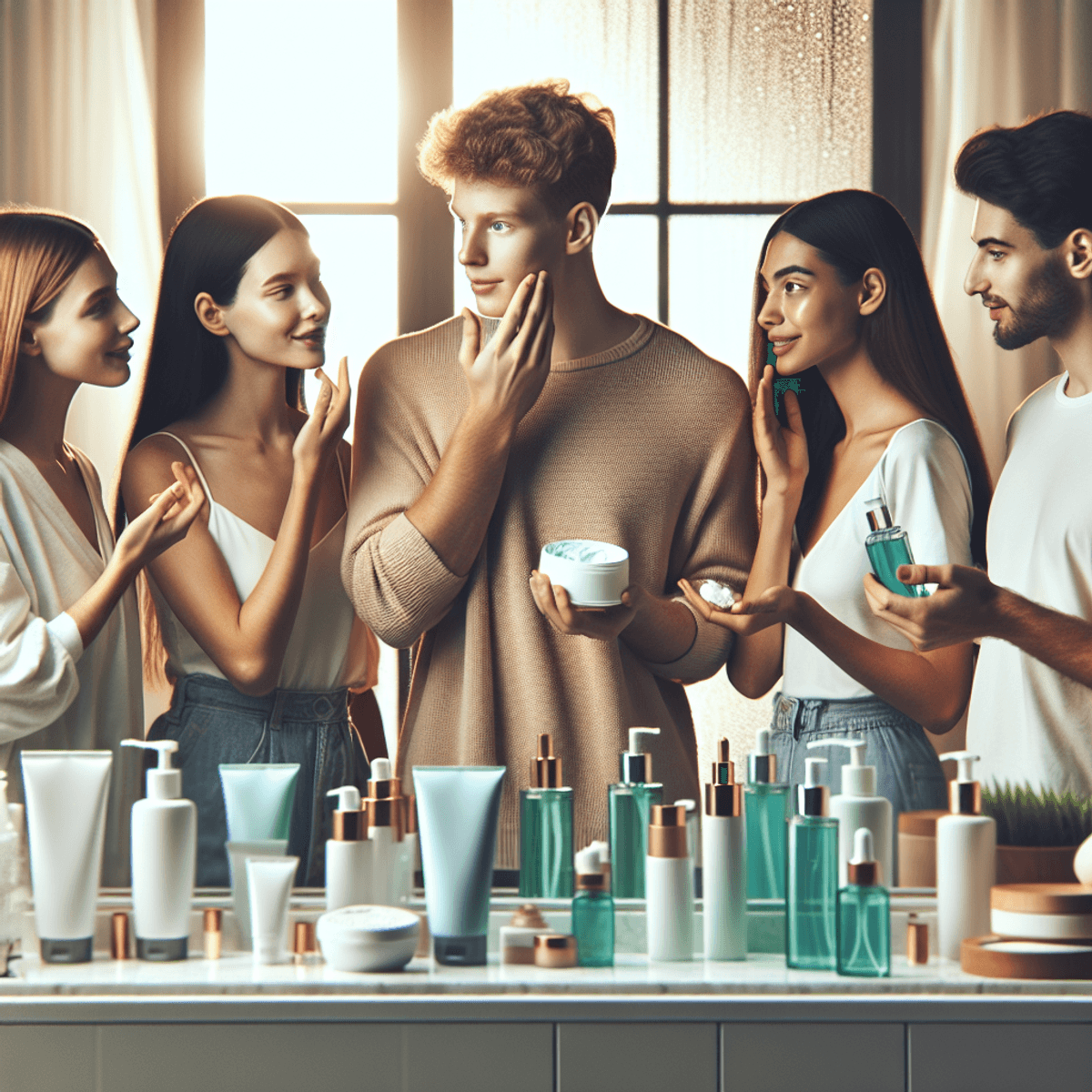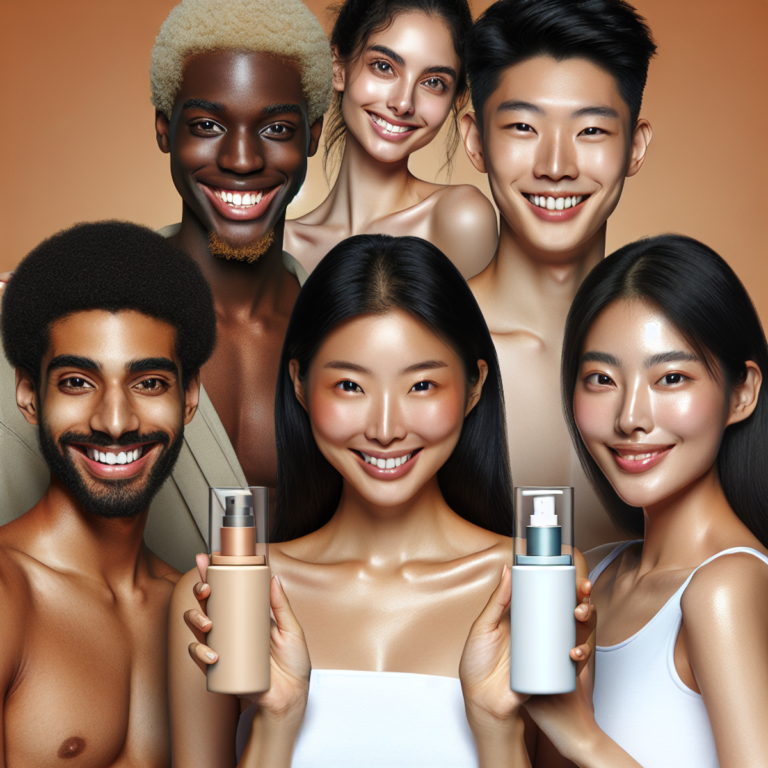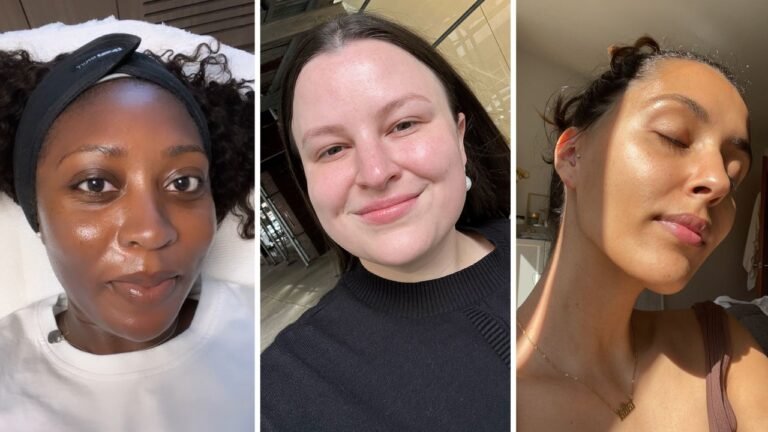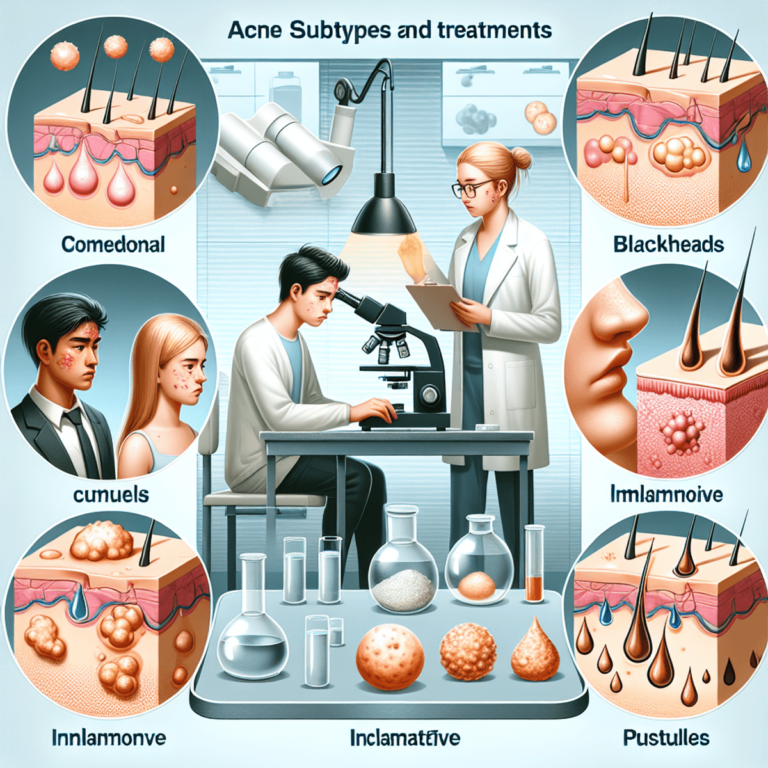How to Get Rid of Pimples, According to Dermatologists

Introduction
Pimples and acne are a common skincare problem that affects people of all ages. These unwanted blemishes can show up on the face, forehead, and other areas, often leading to questions about how to get rid of pimples quickly or stop them from coming back for good. Whether you’re dealing with tiny bumps on the forehead or looking for ways to remove pimple scars, it’s important to understand the causes and treatments.
Advice from dermatologists plays a key role in effectively managing these skin issues. Professional guidance ensures that treatments are tailored to your specific skin type and condition, addressing everything from how to get rid of small bumps on the face to managing severe acne breakouts. Seeking expert recommendations can prevent common mistakes associated with DIY remedies that can make skin problems worse.
This article provides a comprehensive guide on how to get rid of pimples, according to dermatologists. You will learn:
- The different types of acne and their characteristics.
- Effective topical treatments and spot solutions.
- Professional treatment options for severe cases.
- Home remedies for mild conditions and what to avoid.
- Lifestyle adjustments and preventive measures for long-term skin health.
By exploring these dermatologist-recommended strategies, you can take confident steps toward achieving clearer skin.
Understanding Different Types of Acne
Dealing with acne requires a tailored approach, and understanding the different types of acne is crucial for targeting your treatment effectively. Dermatologists classify acne into several categories, each with distinct characteristics and treatment needs.
Types of Acne
1. Comedonal Acne
This type includes blackheads and whiteheads, which are non-inflammatory lesions. Blackheads occur when pores are clogged with excess oil and dead skin cells, while whiteheads are closed comedones trapped beneath the skin surface.
2. Inflammatory Acne
Characterized by red, swollen pimples known as papules and pustules. Papules are small red bumps that can be tender to touch, whereas pustules contain pus at their tips.
3. Nodulocystic Acne
The most severe form involves nodules or cysts that penetrate deep into the skin layers. These lesions can be painful and often lead to scarring if not treated promptly.
Importance of Identifying Your Acne Type
Knowing your specific acne type helps in choosing the right treatment strategy, whether it’s learning how to get rid of zits fast or how to remove blackheads and whiteheads permanently. Each acne type responds differently to treatments:
- Comedonal Acne: Often treated with topical retinoids or salicylic acid to unclog pores.
- Inflammatory Acne: Benzoyl peroxide or antibiotics may be recommended to reduce bacteria and inflammation.
- Nodulocystic Acne: Professional interventions like cortisone injections or systemic medications might be necessary.
Symptoms and Characteristics
Understanding symptoms aids in identifying which category your acne falls into:
- Blackheads & Whiteheads (Comedonal): Small bumps without redness.
- Papules & Pustules (Inflammatory): Red, swollen lesions possibly filled with pus.
- Nodules & Cysts (Nodulocystic): Large, painful lumps beneath the skin’s surface.
Recognizing these symptoms early allows for effective intervention, preventing progression to more severe forms that could lead to scarring. Treatments like pimple scar removal cream or treatment for pimples on buttocks should be chosen based on the underlying causes identified by a dermatologist.
Dermatologist-Recommended Topical Treatments for Acne
To effectively tackle acne, dermatologists often recommend topical treatments that target the root causes of breakouts. These treatments can help manage and reduce the occurrence of pimples, addressing questions like “how to get rid of spots on face” or “how to treat sudden face breakout” with evidence-based solutions.
Benzoyl Peroxide
Benzoyl peroxide is a powerful antibacterial agent known for its ability to kill the bacteria that cause inflammation in acne. This ingredient is commonly used in concentrations ranging from 2.5% to 10%. By reducing bacteria on the skin, it minimizes the likelihood of future breakouts. To use benzoyl peroxide effectively:
- Start with a lower concentration to assess your skin’s tolerance.
- Apply it to clean, dry skin once or twice daily as directed by your dermatologist.
- Be aware that it may cause dryness or peeling; pair it with a suitable moisturizer if needed.
Salicylic Acid
Salicylic acid is renowned for its exfoliating properties, making it an excellent choice for unclogging pores and removing dead skin cells. It is particularly effective for treating blackheads and whiteheads. Here’s how you can incorporate salicylic acid into your skincare routine:
- Use a cleanser or toner containing salicylic acid once daily.
- For targeted treatment, apply a thin layer directly onto blemishes.
- Consistent use can prevent future blockages and maintain clear pores.
Retinoids
Retinoids play a crucial role in acne management by promoting cell turnover and preventing clogged pores. They are beneficial for those wondering “how to prevent pimples on face forever“. Retinoids work by:
- Enhancing the renewal rate of skin cells.
- Reducing sebum production, a contributing factor to acne.
- Applying retinoid creams or gels at night due to their potential sensitivity to sunlight.
Tea Tree Oil
For those seeking natural alternatives, tea tree oil offers anti-inflammatory properties and can be an effective solution for mild acne cases. However, it’s essential to follow safe usage guidelines:
- Always perform a patch test before widespread application to avoid allergic reactions.
- Dilute tea tree oil with a carrier oil (like jojoba or coconut oil) before applying it directly onto pimples.
- Use sparingly; excessive application can lead to skin irritation.
These dermatologist-recommended topical treatments provide various options tailored to different acne types and severity levels. Whether you’re looking for “pimple treatment at home” or need guidance on “how to reduce pimple redness in 5 minutes”, incorporating these treatments effectively can lead you toward clearer skin. Each product has unique benefits—understanding how they work will allow you to craft a personalized skincare regimen tailored specifically for your needs.
Spot Treatments for Quick Relief from Pimples
Spot treatments offer a targeted approach to combatting individual pimples, providing an effective solution for those wondering how to get rid of pimples on the face quickly. These treatments work by directly applying active ingredients to reduce the size and redness of specific breakouts without affecting the surrounding skin.
How Spot Treatments Work
- Targeted Action: By focusing on individual blemishes, spot treatments can deliver concentrated doses of acne-fighting ingredients exactly where they are needed most.
- Quick Results: Designed for rapid relief, these products aim to diminish the appearance of pimples overnight, making them ideal for urgent situations like important events or meetings.
Key Ingredients in Effective Spot Treatments
When choosing a spot treatment, look for these powerful ingredients known for their acne-fighting properties:
- Benzoyl Peroxide: Known for its ability to kill acne-causing bacteria and reduce inflammation. Available in various concentrations, it’s a staple in many pimple treatment products.
- Salicylic Acid: This beta hydroxy acid helps to unclog pores by dissolving excess oil and dead skin cells. It’s particularly beneficial for those seeking how to remove pimples naturally and permanently, as it exfoliates gently.
Application Tips for Optimal Results
To maximize the effectiveness of your spot treatments, follow these application tips:
- Cleanse First: Always start with a clean face. Use a gentle cleanser to remove any dirt and oil that could impede the treatment’s effectiveness.
- Apply Sparingly: Use a small amount of product directly on the pimple. Avoid spreading it over unaffected areas to prevent irritation or dryness.
- Timing Matters: For best results on how to remove pimples overnight, apply your spot treatment before bed. Overnight application allows active ingredients to work uninterrupted while you sleep.
- Moisturize Appropriately: After applying a spot treatment, follow up with a non-comedogenic moisturizer to keep your skin hydrated without clogging pores.
With these strategies, you can effectively use spot treatments as part of your routine on how to get rid of teenage pimples or even back pimples. Understanding how these products work can empower you with confidence in managing unexpected breakouts swiftly and effectively.
Professional Treatment Options for Severe Acne Cases
When over-the-counter solutions aren’t enough, professional treatment options offer a powerful arsenal against severe acne cases. Dermatologists provide advanced techniques that effectively address stubborn and deep-rooted acne issues.
Cortisone Injections for Acne
Cortisone injections are a popular choice for quickly reducing inflammation in cystic lesions. These injections deliver a potent anti-inflammatory steroid directly into the cyst, rapidly decreasing swelling and pain. The procedure is typically swift, with minimal discomfort, making it an appealing option for those dealing with painful cystic or nodulocystic acne. Patients often see a significant reduction in the size of the pimple within 24 to 48 hours.
Blue Light Therapy for Acne
Another innovative treatment is Blue Light Therapy, which targets acne-causing bacteria without invasive measures. This therapy utilizes specific wavelengths of blue light to penetrate the skin and neutralize bacteria responsible for triggering breakouts. It offers a non-invasive solution for individuals seeking to reduce pimples while promoting clearer skin over time. Regular sessions can help manage persistent acne by diminishing bacterial load and calming inflammation.
These professional treatments can be especially beneficial for individuals struggling with severe forms of acne, such as deep pimples or pustules. By consulting a dermatologist, you’ll gain tailored advice on how to get rid of bumps on arms or treat blackheads effectively.
Integrating these cutting-edge therapies into your skincare regimen can significantly enhance your efforts to manage severe acne effectively.
Home Remedies That May Help with Mild Cases of Pimples (and What to Avoid)
When dealing with mild cases of pimples, certain home remedies can offer temporary relief and support. However, it’s vital to distinguish between effective solutions and those that might cause more harm than good.
Effective Home Remedies
1. Honey Masks
Honey is known for its natural antibacterial properties, making it a soothing option for treating minor breakouts. Applying a thin layer of raw honey to the affected area may help reduce inflammation and redness.
2. Aloe Vera Gel
Aloe vera has calming and moisturizing qualities that can soothe irritated skin. It’s particularly beneficial for reducing redness and swelling when applied directly from the plant or as a gel.
3. Green Tea Extract
Green tea is rich in antioxidants, which can help reduce sebum production and fight bacteria. Applying cooled green tea to the skin or using products containing green tea extract might aid in managing mild acne.
Remedies to Avoid
Certain DIY remedies are best avoided due to their potential to irritate or worsen your skin condition:
1. Toothpaste
Toothpaste is often cited as a quick fix, but it contains harsh ingredients that can lead to dryness and irritation rather than healing.
2. Hydrogen Peroxide
While hydrogen peroxide is an effective disinfectant, it can damage skin cells and delay the healing process when used on pimples.
3. Apple Cider Vinegar
Despite its popularity, undiluted apple cider vinegar is too acidic for direct application on the skin and may cause burns or irritation.
Choosing safe home remedies requires careful consideration. Always conduct a patch test before trying any new treatment to ensure your skin doesn’t react negatively.
Lifestyle Adjustments to Support Clearer Skin Over Time
Creating a skincare routine tailored specifically for acne-prone skin is crucial. Consistency and the right products can make all the difference in managing and preventing breakouts. Here’s how you can enhance your routine:
1. Cleansing
Start with a gentle cleanser that removes excess oil and dirt without stripping your skin’s natural barrier. Look for ingredients like salicylic acid if you’re dealing with clogged pores or tiny bumps on your face.
2. Exfoliation
Regular exfoliation helps in treating stubborn blackheads and preventing them from forming. However, avoid over-exfoliating as it can irritate your skin. Consider incorporating treatments like dermaplaning, which can effectively remove dead skin cells and peach fuzz, leading to smoother skin.
3. Moisturizing
Use a lightweight, non-comedogenic moisturizer to keep your skin hydrated. This step is vital even if you have oily skin, as dehydration can lead to increased oil production.
4. Sun Protection
Apply a broad-spectrum sunscreen daily to protect against UV damage which can exacerbate acne scars and dark spots.
Selecting the right makeup products can also impact your skin health. Opt for non-comedogenic cosmetics that won’t clog pores or worsen blemishes. Be mindful of product expiration dates and wash your makeup brushes regularly to prevent bacterial buildup.
Maintaining clear skin involves more than just topical treatments. Simple lifestyle changes like changing pillowcases frequently, managing stress through mindfulness practices, and avoiding picking at pimples are effective strategies in how to stop breakouts and remove dark spots caused by pimples overnight.
Whether you’re dealing with persistent pimples on the pubic area or seeking a pimple solution for bumps on legs, adopting these habits can contribute significantly to achieving clearer skin over time.
Preventive Measures Against Future Acne Breakouts
Preventing pimples from forming again requires a proactive approach. Here’s how you can do it:
1. Establish a Daily Cleansing Routine
A daily cleansing routine is essential to remove excess oil and debris while preserving your skin’s natural barrier. Opt for gentle cleansers that effectively clean without causing dryness or irritation.
This step is crucial for those looking to get rid of spots on the face quickly and remove blemishes fast.
2. Choose the Right Moisturizer
For moisturizing, choose lightweight moisturizers specifically designed for oily or combination skin types. A great option would be the CeraVe PM Facial Moisturizing Lotion, which hydrates without clogging pores.
This is vital in preventing pimples and reducing the appearance of pimple scars naturally. When selecting skincare products, look for labels that say non-comedogenic to ensure they won’t contribute to acne formation.
3. Incorporate Targeted Ingredients
Addressing how to remove dark spots caused by pimples involves incorporating ingredients like niacinamide or vitamin C into your routine. These components help even skin tone and fade marks over time, contributing to clearer skin.
Additionally, understanding how to get rid of under-the-skin pimples overnight can be challenging due to their deep-seated nature. Consistent application of treatments containing salicylic acid or retinoids can aid in reducing these stubborn bumps.
4. Seek Professional Help if Needed
To effectively remove pimple scars permanently, consider consulting with a dermatologist about professional options like laser therapy or chemical peels, which can offer more targeted results than home remedies alone.
Incorporate these preventive measures into your skincare routine consistently, as this commitment is key to achieving long-term clarity and minimizing future breakouts.
Conclusion & Final Thoughts on Managing Pimples Effectively with Dermatologist Guidance
Achieving clear skin requires a holistic approach that thoughtfully combines dermatologist-recommended treatments with lifestyle adjustments. Understanding how to get rid of pimples, whether it’s facial acne, pimples on the buttocks, or even vaginal pimples, involves more than just topical applications.
Key Strategies for Clearer Skin
- Topical Treatments: Consistently use treatments like benzoyl peroxide and salicylic acid for targeted results.
- Lifestyle Adjustments: Maintain a skincare routine tailored to your needs. Choose non-comedogenic products and manage stress levels to prevent future breakouts.
- Home Remedies: While tempting, avoid unverified DIY remedies that can cause more harm than good.
For persistent issues like blind pimples or red marks left by spots, consider professional guidance. Dermatologists can offer advanced solutions such as cortisone injections or blue light therapy, which are effective for severe cases.
Embrace these strategies to not only make pimples go away but also to stop them from coming back, ensuring healthier skin over time.
FAQs (Frequently Asked Questions)
What are the common types of acne?
The common types of acne include comedonal acne, inflammatory acne, and nodulocystic acne. Each type has specific symptoms and characteristics, making it important to identify your specific acne type for targeted treatment strategies.
What topical treatments do dermatologists recommend for acne?
Dermatologists often recommend topical treatments such as benzoyl peroxide, salicylic acid, retinoids, and tea tree oil. These ingredients help to reduce breakouts by unclogging pores, increasing cell turnover, and providing anti-inflammatory benefits.
How can I quickly relieve a pimple?
Spot treatments containing benzoyl peroxide or salicylic acid can effectively target individual pimples and reduce their size quickly. It’s important to apply these treatments correctly for optimal results.
What professional treatment options are available for severe acne?
For severe acne cases, dermatologists may offer advanced treatments such as cortisone injections to rapidly reduce inflammation in cystic lesions and blue light therapy which targets acne-causing bacteria non-invasively.
Are there any effective home remedies for mild cases of pimples?
Some effective home remedies include honey masks which can provide temporary relief. However, it’s crucial to avoid DIY remedies like toothpaste or hydrogen peroxide as they may cause harm or be ineffective.
What lifestyle adjustments can support clearer skin over time?
Maintaining a consistent skincare routine tailored for acne-prone skin is essential. Additionally, choosing non-comedogenic makeup products that won’t clog pores can help prevent future breakouts.










